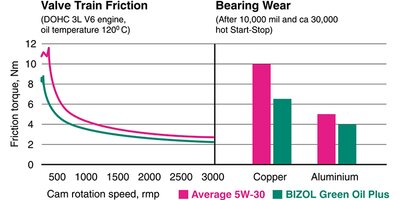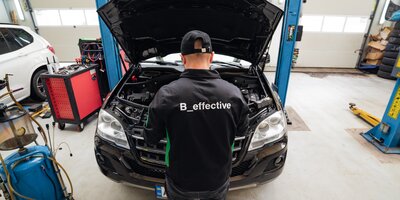HOW DOES A CVT TRANSMISSION WORK? BIZOL® PROTECT ATF CVT
News and technology – increased sales in automatic transmission
Transmissions are among the most important components in a vehicle and transmit torque comfortably to the wheels. The trend towards automatic transmissions has risen sharply in recent years. It is not only German car customers who now demand an automatic transmission as a feature in new vehicles. The USA and Japan, too, are embracing automatic transmission technology with increasing sales. The CVT is a special type: it´s a continuously variable automatic transmission.
How the continuously variable automatic transmission works
This is the essential difference between CVT transmissions and manual transmissions or conventional automatic transmissions: the power is not transmitted via gear pairs, but a connecting link. Two opposing pairs of conical pulleys (variators) and a connecting link (or V-belt, plate chain or multi-disc chain) provide the power transmission and different transmission ratios. Similar to a bicycle with derailleur gears, the transmission ratio is adjusted by the position of the push link belt. Using an electro-hydraulic unit, the axial distance between the conical pulleys can be continuously regulated so that the push link belt runs either up or down, thereby changing the transmission ratio.
Advantages of CVT transmissions
Various well-known car manufacturers use the advantages of CVT transmissions with impressive driving dynamics and low fuel consumption. Whether Ecotronic, Multitronic, Autotronic, Variomatic or Multidrive, the drive principle is the same. Jerk-free movement due to the absence of traction interruptions, the drive in the optimal transmission ratio range, ensure a lot of driving pleasure and economical operation.
Disadvantages of CVT transmissions
Unfortunately, this is the other side for the same coin. The fact that the entire power is transmitted over the connecting rod can cause vibrations and whistling noises. The high contact pressure due to the design and the high tension on the connecting link put enormous strain on the material, which in the worst case can cause the connecting link to break.
Requirements for the transmission oil
The automatic transmission oil must meet these high requirements. A stable lubricating film must constantly withstand the high pressure loads, must not foam and, at best, have excellent anti-oxidation properties that compensate for everyday impacts such as condensation.
These are all reasons to take regular gearbox oil changes seriously. If you disregard the prescribed change intervals, you risk reduced driving comfort such as jerking or even gearbox damage caused by the breaking of the thrust link belt.
BIZOL Protect Automatic Transmission Fluid CVT
BIZOL Protect ATF CVT meets each of these requirements and proves to be an outstanding choice for special use in CVT transmissions of the latest generation. Autotronic transmissions of the Mercedes A- and B-class, Audi Multitronic or many other variable automatic transmissions of different manufacturers can rely on the excellent lubricating properties of this high-performance automatic transmission fluid. Selected base oils and a well-balanced additive package protect against foaming and provide excellent anti-aging and anti-oxidation properties.
To select the right lubricant, follow the manufacturer’s instructions in the owner’s manual. For satisfied customers, try the quality products from BIZOL and take advantage of the fast delivery times! For more information, visit our website.

You might also like

Prof. Dr. Boris Zhmud, Head of R&D, BIZOL Germany

Within the realm of automotive care, few substances are as vital as motor oil, in ensuring the seamless operation of a vehicle's propelling device. It serves as the lifeblood of a motor, ensuring that the intricate machinery operates efficiently and without unnecessary friction. The functions of motor lubricant substance extend far beyond just lubrication, encompassing a range of critical tasks that contribute to the longevity and performance of a propelling mechanism. In this article, we’ll delve into the multifaceted functions of motor oil and explore how it plays a pivotal role in maintaining the health of automotive powerhouses.

The modern marvel of an internal combustion motor powers our vehicles, providing the strength and reliability we rely on for daily transportation. However, just like anything else subjected to constant use, motorized units experience wear and tear over time. Component deterioration can significantly impact performance and longevity. In this article, we will delve into the intricacies of engine wear meaning, explore the various causes behind it, provide actionable tips to reduce and prevent it. Furthermore, we will look at how specialized engine oils, such as BIZOL, play a crucial role in safeguarding your engine’s health. Let’s begin by understanding what engine wear is and the factors that contribute to it.

